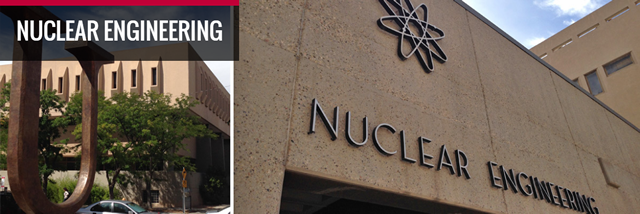
Nuclear Engineering ETDs
Publication Date
Fall 9-5-2018
Abstract
MD simulations of SiO2, TiO2, Cr2O3, Al2O3, MgO, and SiC, are performed to: (a) calculate TDE probability distributions and dependence on crystallographic direction, and (b) determine the number and types of defects formed with low- and high-energy PKAs and projectiles. In addition, a qualitative comparison of the MD simulation results of radiation damage in TiO2, MgO, and crystalline and amorphous SiC thin films are compared with those of in situ TEM ion beam irradiation experiments at the Sandia National Laboratories’ I3TEM facility.
The TDE probability distributions show strong anisotropy and those with 50% probability agree well with the reported experimental values. Results show that MgO and TiO2 are the most radiation hard of all metal oxides investigated and that the lost long-range order in TiO2 during the ballistic phase of interaction by a 46 keV Ti projectile, reemerges as most of the produced defects anneal within tens of picoseconds.
The MD simulations of Si PKAs of up to 100 keV in 3C-SiC shows only dispersed subcascades forming. The sizes of defect clusters in 3C-SiC are in general agreement with the in situ TEM irradiation experiments using a 1.7 MeV Au3+ ion beam. The defect structures show contrast changes ranging from 9.1 to 83.5 nm2, which is in general agreement with the MD simulation values ranging from 5 to 76 nm2. SiC amorphization is not observed in the MD simulations. The stored potential energy due to defect production in 3C-SiC is ~10% of the 10-100 keV Si PKAs in the MD simulations, and indistinguishable in a-SiC.
Simulations using single and multiple Au projectiles show that the extent of the defect cascades strongly depend on the number of projectiles and that defect structures are in general agreement with those induced by single 1.7 MeV Au3+ ion strikes in the in situ TEM experiments. The MD simulations with 10, 20-keV projectiles in MgO produces a void of 102,500 vacancies during the ballistic phase, decreasing to 5,000 vacancies after annealing. Simulated SAED patterns and RDFs show local amorphization of MgO at the peak of the ballistic phase, which partially recrystallizes during the annealing phase.
Keywords
Radiation Damage, Molecular Dynamics, In Situ Transmission Electron Microscopy, Selected Area Electron Diffraction Patterns, Multi-Projectile Simulations, Metal Oxides and Carbides
Sponsors
Institute for Space and Nuclear Power Studies
Document Type
Dissertation
Language
English
Degree Name
Nuclear Engineering
Level of Degree
Doctoral
Department Name
Nuclear Engineering
First Committee Member (Chair)
Mohamed El-Genk
Second Committee Member
Anil Prinja
Third Committee Member
Osman Anderoglu
Fourth Committee Member
Yu-Lin Shen
Recommended Citation
Cowen, Benjamin Jackson. "Radiation Effects in Metal Oxides and Carbides." (2018). https://digitalrepository.unm.edu/ne_etds/74


